LangChain
Overview of LangChain
Why LangChain
In this lesson, we’ll explore why LangChain has become the go-to framework for building AI-powered applications.
LangChain provides a standardized abstraction layer—much like ODBC or JDBC does for databases—decoupling your application from the fast-moving, rapidly evolving Gen-AI ecosystem. With dozens of language models, vector databases, embedding models, and APIs available, managing each one directly can quickly become cumbersome. LangChain offers a unified interface to the core elements of the AI stack so you can focus on application logic rather than integration details.
Note
LangChain supports all major LLM providers—open source and hosted—so you can switch models without rewriting your code.
One of LangChain’s core strengths is seamless integration with diverse data sources. LLMs don’t operate in a vacuum—they require context built from enterprise data, which often lives across both structured and unstructured formats. Whether you’re working with JSON, CSV, or XML files; searching through PDFs, Word documents, and PowerPoint slides; or parsing Excel spreadsheets, LangChain helps you ingest and prepare that data for your model.
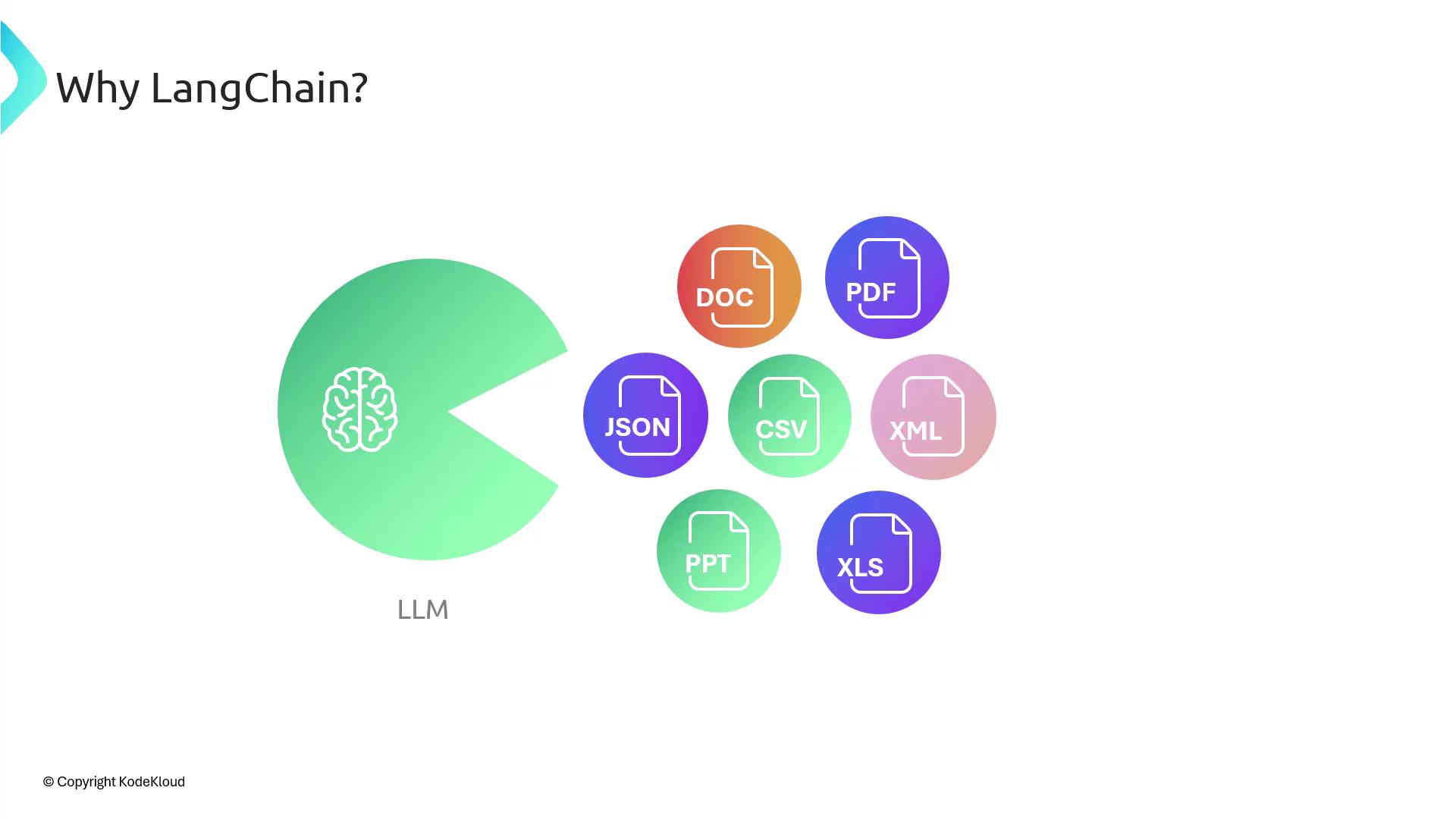
By acting as a bridge to databases, document storage, web search services, and external APIs, LangChain removes the need to hardwire each integration into your codebase.
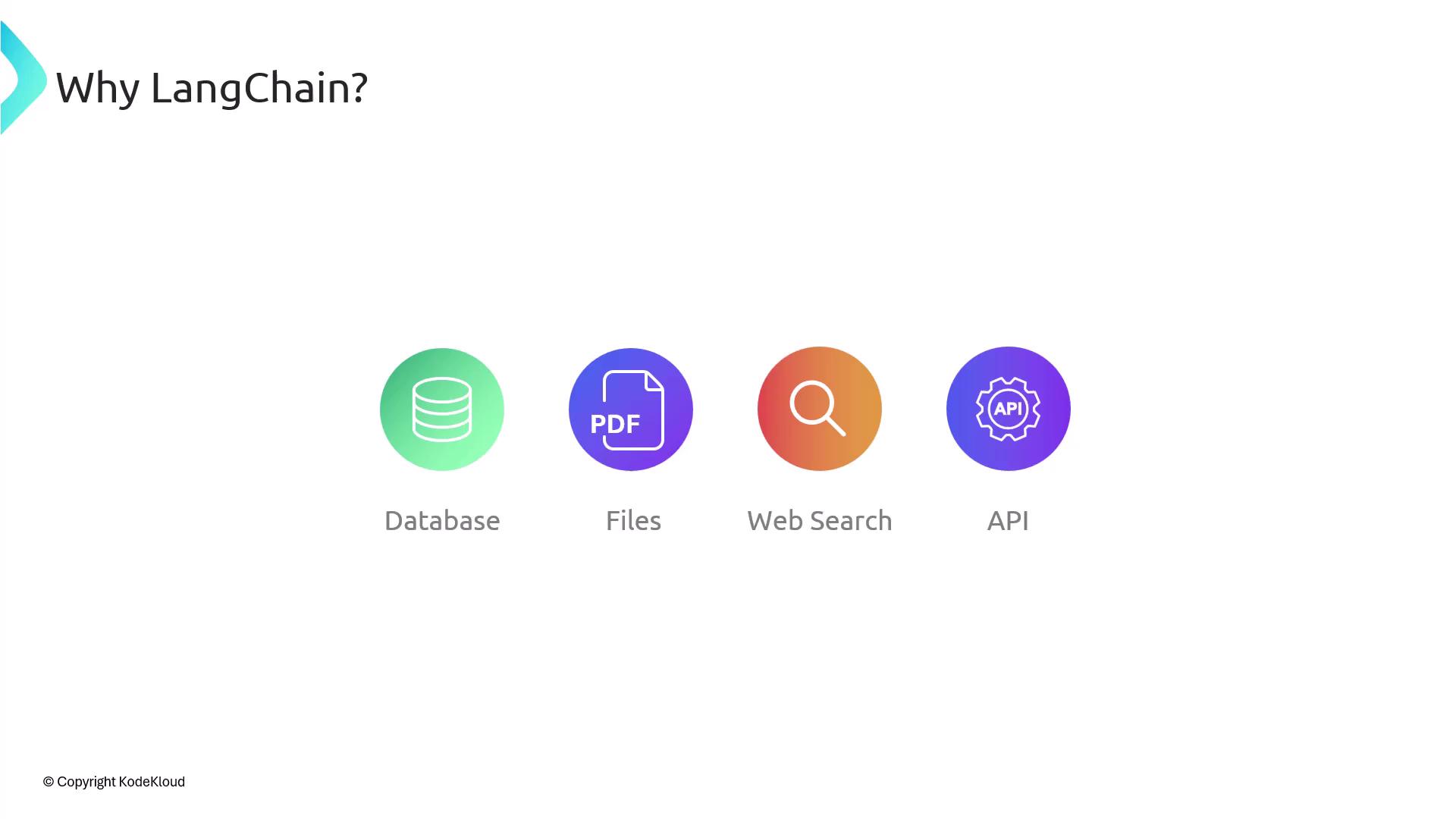
Swappable Search Providers
You can seamlessly swap out one search provider for another—be it Bing, DuckDuckGo, or SerpAPI—without changing your application logic.
| Search Provider | Endpoint Example |
|---|---|
| Bing | https://api.bing.microsoft.com |
| DuckDuckGo | https://api.duckduckgo.com |
| SerpAPI | https://serpapi.com/search |
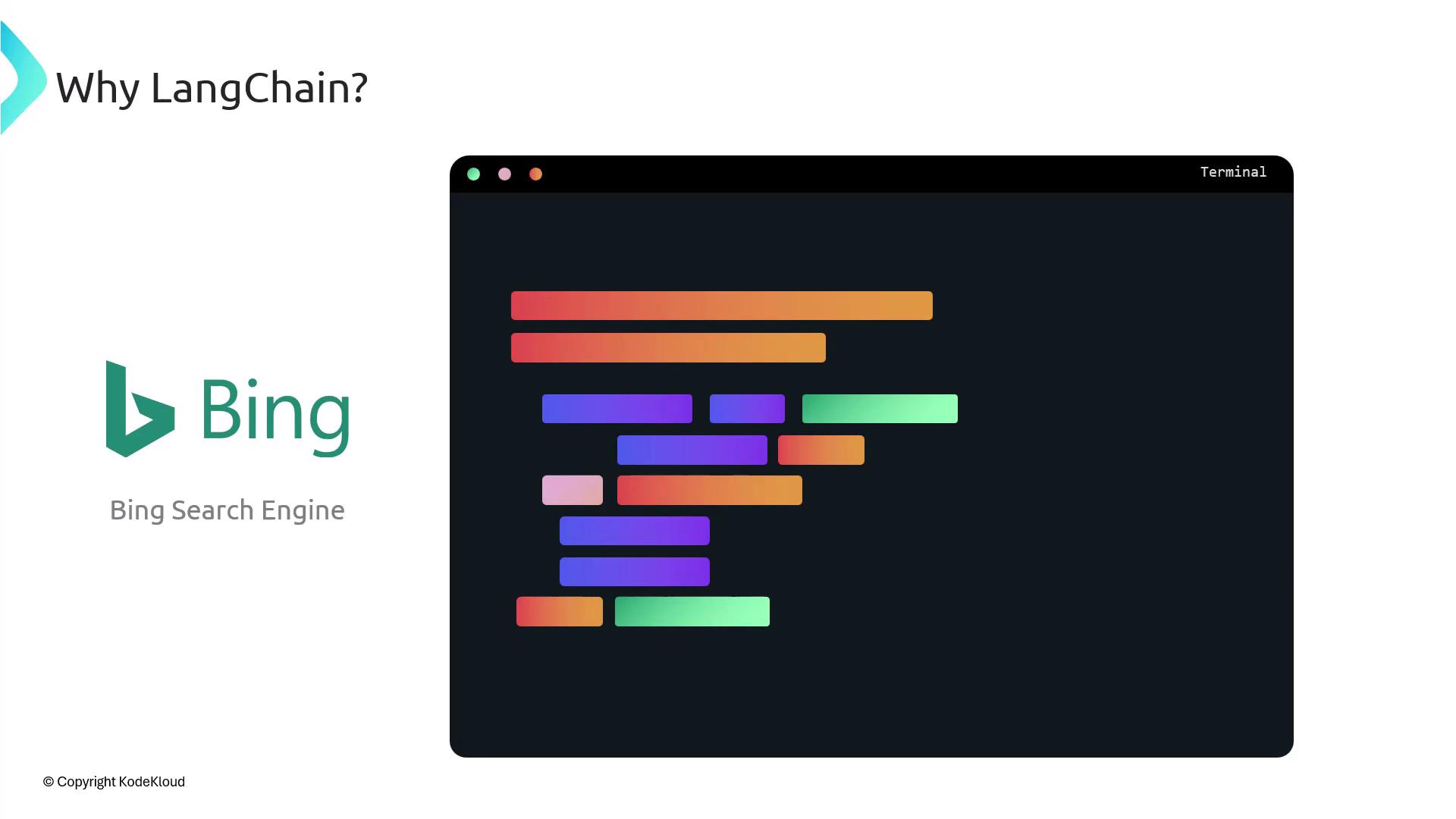
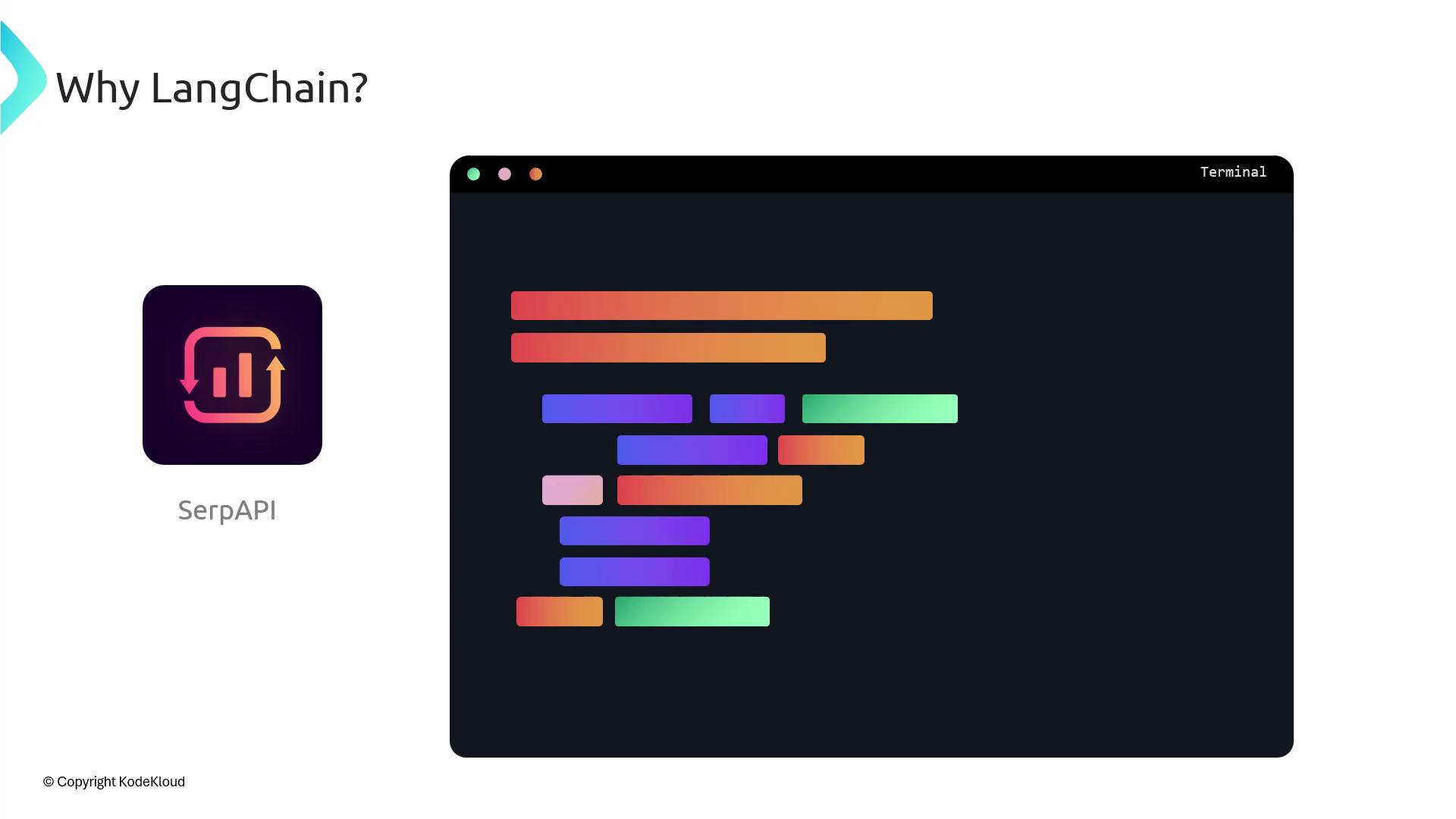
LangChain also simplifies advanced tasks such as prompt engineering, response transformation, and output formatting. It even leverages the LLM itself to identify missing pieces: if a prompt is ambiguous or incomplete, LangChain asks the model, “What do you need to proceed?” The LLM then returns any required dependencies, and LangChain automatically fetches the necessary data or APIs.
Warning
Overlooking proper prompt context may lead to incomplete outputs. Always verify that your data sources cover all required information layers.
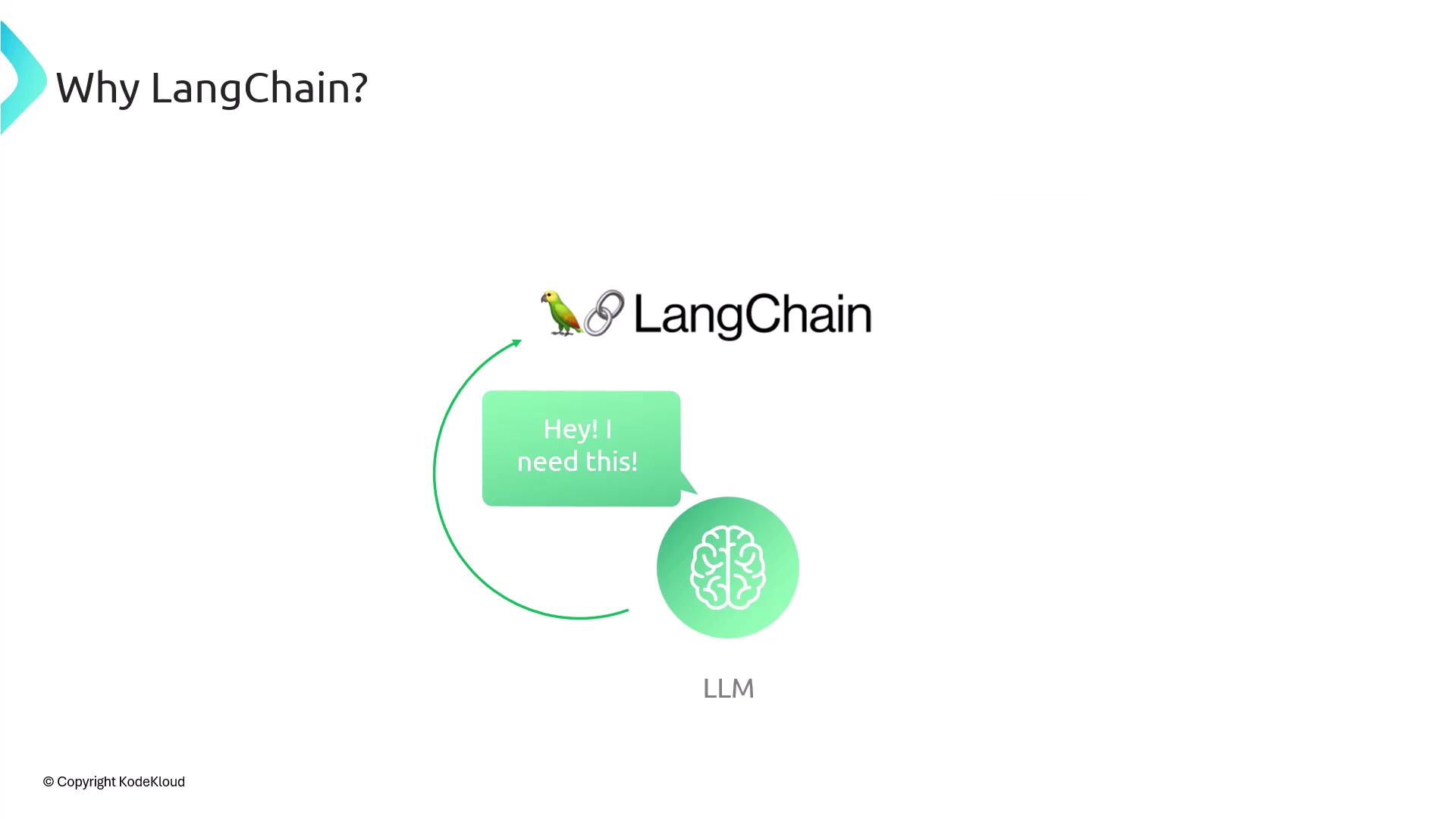
This dynamic orchestration enables you to build autonomous, intelligent agents—systems that combine reasoning and automation, going far beyond simple chatbots. Such agents represent a significant step toward Artificial General Intelligence (AGI).
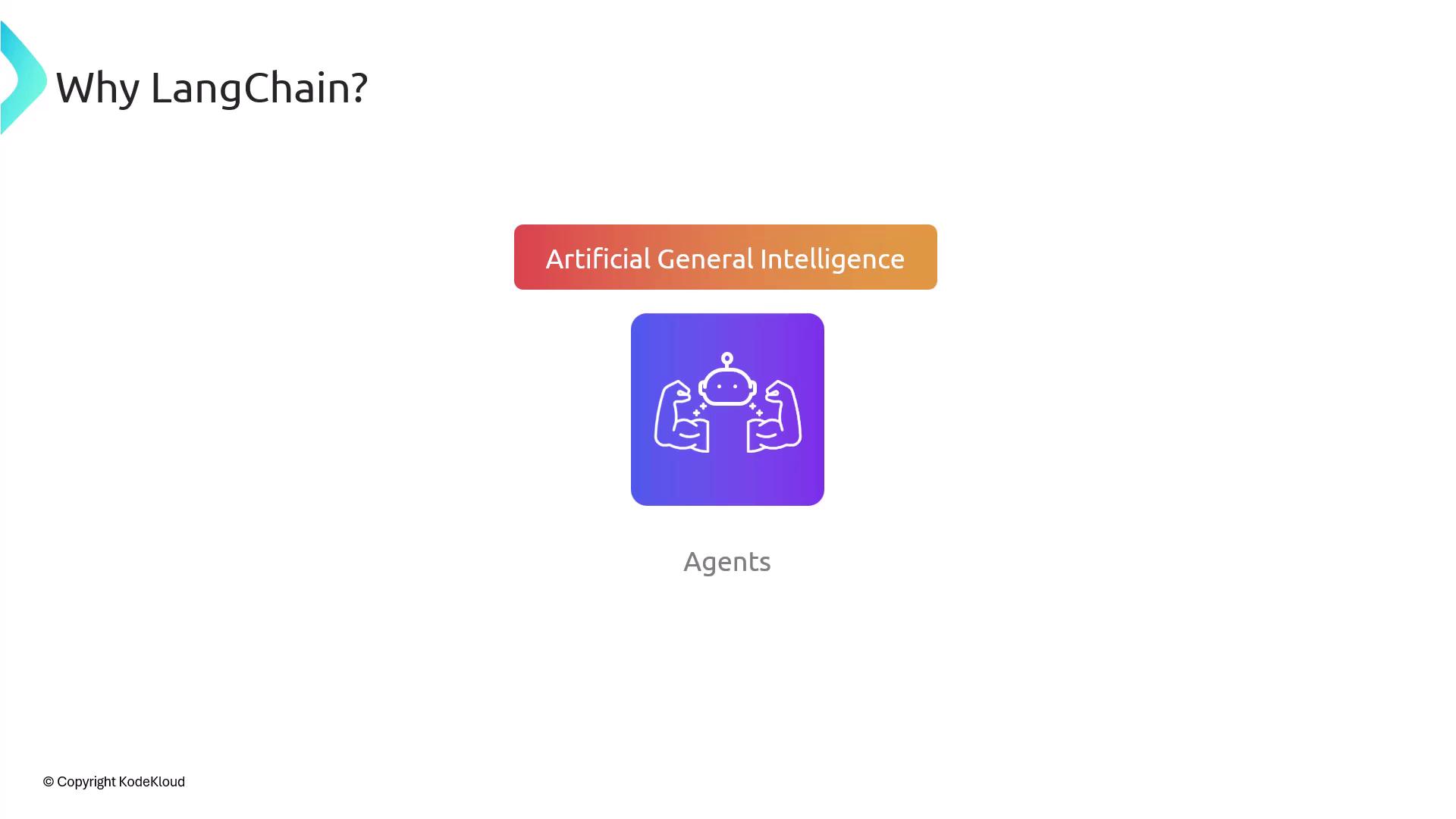
We’ll dive into building agents with LangChain in the next lesson!
Links and References
Watch Video
Watch video content